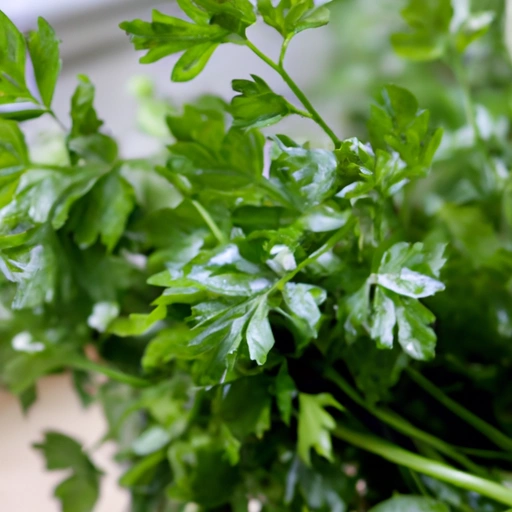Italian Parsley
Description

Italian parsley, also known as flat-leaf parsley, is a robust, versatile herb that's a staple in culinary traditions around the globe. With its bright green leaves and clean, slightly peppery taste, it's used to enhance the flavor of a wide array of dishes. Italian parsley is not only celebrated for its taste but also for its decorative appeal, often used as a garnish to add a splash of color to plates.
Common uses
Italian parsley is widely used as a fresh culinary herb. It is often used as a garnish on dishes to add a pop of color and fresh flavor. It can also be chopped and sprinkled over food as an ingredient, or incorporated into sauces, dressings, and marinades. Additionally, Italian parsley can be used to make herbal butters or oils, and it is a traditional component in herb blends such as the French 'bouquet garni' and the Italian 'gremolata'.
Nutritional value
Calories
Italian parsley is low in calories, providing just about 22 calories per 100 grams or roughly 6 calories per 1/4 cup (15 grams).
Protein
It contains about 3 grams of protein per 100 grams, or approximately 0.45 grams per 1/4 cup (15 grams).
Fat
This herb is virtually fat-free, with less than 1 gram of fat per 100 grams, and negligible amounts in typical serving sizes.
Carbohydrates
Italian parsley contains about 6 grams of carbohydrates per 100 grams, or less than 1 gram per 1/4 cup (15 grams).
Vitamins
It's an excellent source of Vitamins A, C, and K. A 1/4 cup serving of fresh parsley provides more than 300% of the daily recommended intake of Vitamin K.
Minerals
Parsley is rich in minerals such as iron, calcium, and potassium. 100 grams can provide 21% of the recommended daily intake of iron.
Health benefits
Italian parsley offers a range of health benefits, including anti-inflammatory properties, immune system support from its high vitamin C content, and improved bone health due to its Vitamin K. Its rich iron content also makes it beneficial for those with anemia or iron deficiencies.
Potential risks
As with any herb, Italian parsley should be consumed in moderation. Overconsumption may lead to adverse effects, particularly for those taking blood-thinning medications due to its high Vitamin K content, which can affect blood clotting. Additionally, it contains oxalates, which can be problematic for individuals with kidney disorders.
Common recipes
Some common recipes that feature Italian parsley include tabbouleh, chimichurri sauce, Italian salsa verde, and various pasta dishes. It's also used in soups, stews, and meat or vegetable preparations.
Cooking methods
Italian parsley is most often used fresh to preserve its flavor and nutritional value, although it can also be found dried for use as a seasoning. It's best added towards the end of the cooking process or used as a finishing touch.
Pairing with other ingredients
Italian parsley pairs well with a wide range of foods, including tomatoes, garlic, lemon, and a variety of meats and seafood. It's also complementary to other herbs such as basil, chives, and mint.
Summary
Italian parsley is a flavorful and nutritious herb that enhances food with its vibrant taste and color. A staple in kitchens around the world, from Europe to America to Asia, it's as much at home in simple, everyday meals as it is in sophisticated, gourmet dishes. With its rich history, health benefits, and culinary versatility, Italian parsley is an indispensable ingredient for chefs and home cooks alike.